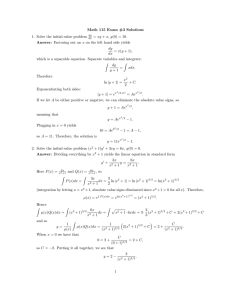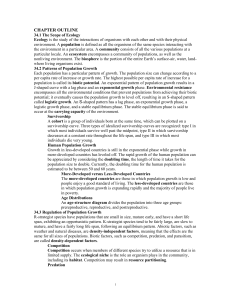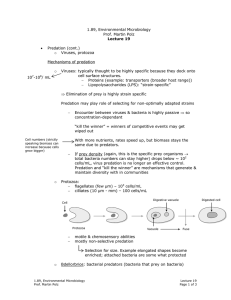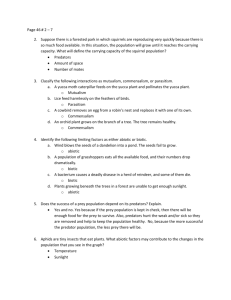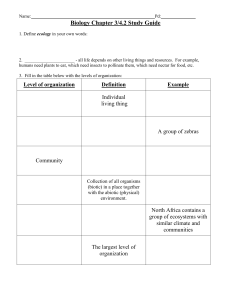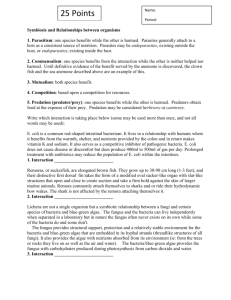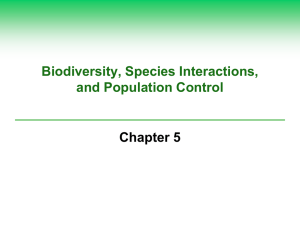Name: Date
advertisement
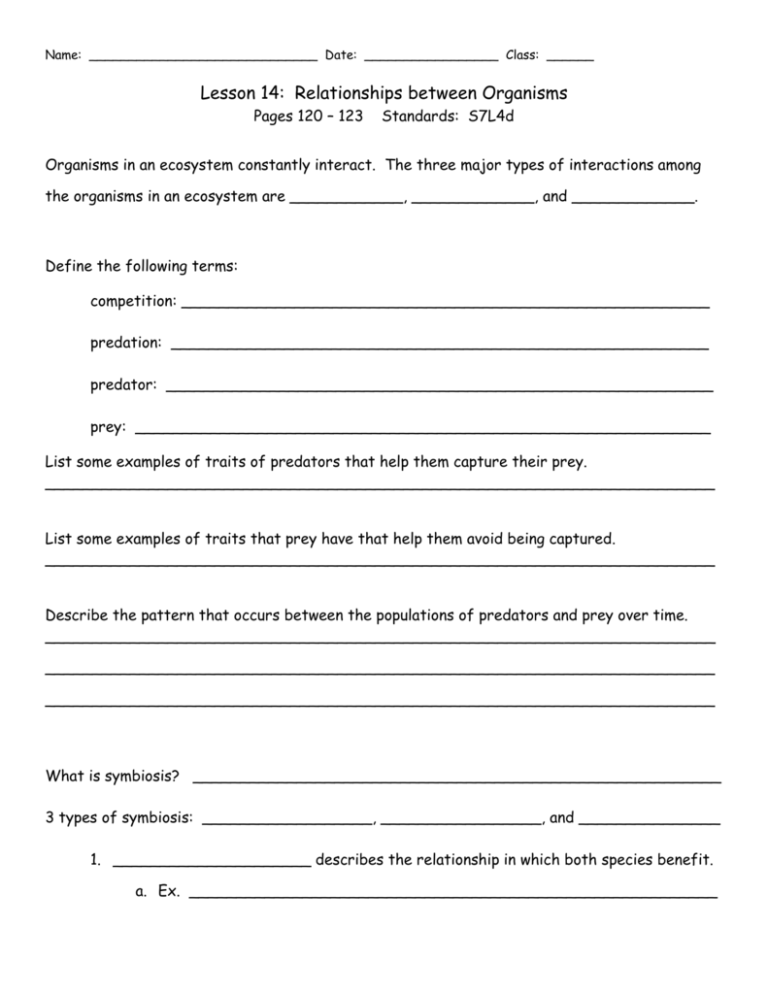
Name: _____________________________ Date: _________________ Class: ______ Lesson 14: Relationships between Organisms Pages 120 – 123 Standards: S7L4d Organisms in an ecosystem constantly interact. The three major types of interactions among the organisms in an ecosystem are ____________, _____________, and _____________. Define the following terms: competition: ________________________________________________________ predation: _________________________________________________________ predator: __________________________________________________________ prey: _____________________________________________________________ List some examples of traits of predators that help them capture their prey. _______________________________________________________________________ List some examples of traits that prey have that help them avoid being captured. _______________________________________________________________________ Describe the pattern that occurs between the populations of predators and prey over time. _______________________________________________________________________ _______________________________________________________________________ _______________________________________________________________________ What is symbiosis? ________________________________________________________ 3 types of symbiosis: __________________, _________________, and _______________ 1. _____________________ describes the relationship in which both species benefit. a. Ex. ________________________________________________________ Name: _____________________________ Date: _________________ Class: ______ 2. _____________________ describes a relationship in which one species benefits. The other species is neither ________________ nor _____________. a. Ex: ________________________________________________________ 3. _____________________ describes a relationship in which one organism lives on or inside another. a. What is the difference between a parasite and a host? _________________ __________________________________________________________ b. How is the parasite–host relationship different from the predator-prey relationship? ________________________________________________ ___________________________________________________________ ___________________________________________________________ c. Examples: i. Live on host: ____________________________________________ ii. Live in host: ____________________________________________ ---------------------------------------------------------TEST PRACTICE: 0. Humans have bacteria inside their intestines. The bacteria help to digest some foods and they produce vitamins that the body cannot manufacture. In turn, the bacteria have a place to live and a constant supply of food. What type of relationship exists between humans and these bacteria? a. Parasitism b. Mutualism c. Predation d. Commensalism 1. Two populations with limited resources experience a. competition. b. commensalism. c. predation. d. parasitism. 2. Predators have relationships with prey. In a similar way, parasites have relationships with Name: _____________________________ Date: _________________ Class: ______ a. competitors. b. mutuals. c. hosts. d. other parasites. Two types of bacteria were grown in the same culture. The graph below shows how their populations changed over time. Use the graph to answer question 3. 3. When the populations were grown separately, they each grew much larger. Why were the results different when they were grown together? a. They competed for limited resources. b. One type of bacteria transformed into another. c. Neither type of bacteria cold withstand the heat of the single culture. d. The different types of bacteria developed a symbiotic relationship.

